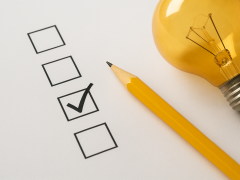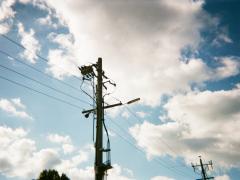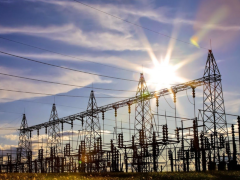This is the opening address at Windaba 2021 by the chair of the South African Wind Energy Association (SAWEA), Mercia Grimbeek.

"Our celebration of ten years of wind energy in South Africa, brings us to a confluence as our industry stands ready for the next decade of growth that will be characterised as a resurgence and a period of exponential growth in our country’s energy narrative.
We are now ready, more than ever, to play our part in building the economic landscape of South Africa at a time that, like many other nations, we are ravaged by the impacts of the protracted health pandemic.
As we are all aware, South Africa’s energy availability is at an all-time low having decreased over dramatically over the last twenty years, when in fact the country requires more power to keep the wheels of industry turning and meet the needs of a growing population.
To achieve this, key elements require alignment, including supportive policy and political will; rolling procurement; the ability to drive the local manufacturing sector in addition to other localisation requirements; investor confidence and access to Green Finance; and a sector transformation framework – many of which are already in place.
In addition to celebrating the renewal of the REIPPPP with Bid Window 5 (BW5) successfully concluded and the imminent release of BW6 and future bidding rounds as outlined by the DMRE, what’s even more exciting, is the published amendments to Schedule 2 of the Electricity Regulation Act. Merely two months ago, the Department of Mineral Resources and Energy’s (DMRE) lifting of the self-generation threshold to 100 MW, without licensing, brings about a beginning of South Africa’s first free market in the energy space.
This opens up the market to the private sector, signified by demand and supply, which will in essence drive investment in the energy generation sector and support economic growth, whilst diversify the generation sources away from just a single risk entity.
The industry can now easily enter into Power Purchase Agreements with private entities, especially intensive energy users (IEUs), which make up a significant portion of the GDP, and deliver projects quickly, which will stimulate economic recovery.
Having said that, the wind sector has much to celebrate but has faced many challenges and continues to do so, grid connectivity being but one of them. If we are to fully embrace the renaissance of the wind industry, we must acknowledge, that business as usual will not serve us well.
We are uniquely placed to help change the face of electricity generation in South Africa. If we want to be the economic catalyst, then it is imperative that we work alongside the grid operator to address transmission bottlenecks. It is imperative that we advocate for continued regulatory change to incentivise renewable energy generation to ensure that as we strive to achieve climate change goals and objectives that we do equitably. It is therefore imperative that we provide meaningful input and support the drafting of the SAREM.
We are now in the position, ten years on, to leverage off lessons learnt and map the way forward for an increase in local manufacturing. We know that successful localisation hinges on a predictable and continued procurement pipeline and to achieve that we, as SAWEA, with the support of you our members and industry in general; must now intensify our conversations and engagements with stakeholders such as the DTIC.
The industry supports and encourages a Just Energy Transition and recognises the need to support accelerated skills development programmes in the wind sector. During the conference breakaway sessions we will specifically explore the training and skills development opportunities available as well as potential areas for expansion. In line with an increase in localisation, industry will not only harness the wind but also the employment and economic benefits of utility scale deployment.
In conclusion, we have much to celebrate and many milestones to be proud of. Wind IPP’s are already moving into geographic locations previously ignored in the earlier stages of the REIPPPP, thanks to maturing technology that see wind turbine generators being built with higher hub heights. Many of our members will no doubt be celebrating BW5 preferred bidder status soon, marking renewed commitment to the REIPPPP. Furthermore, we have commenced engagements with various stakeholders that will culminate in the release of our industry Gender & Diversity Charter in the first half of 2022. We have forged new relationships and lost dear colleagues and industry leaders.
Today we can proudly say that we have transitioned; we are no longer a nascent industry.
We are an industry to be recognised and we look forward to a decade of rebirth and taking up our responsibility as a catalyst for our country’s economic recovery."













